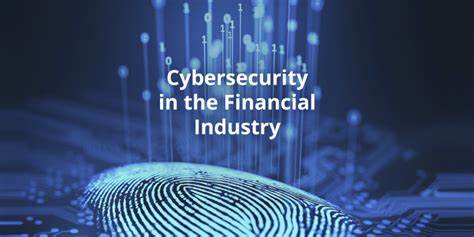Cybersecurity in the Financial Sector: A Critical Priority
The financial sector has long been a prime target for cyberattacks—and in 2025, the stakes are higher than ever. As digital transformation accelerates across banking, insurance, and investment platforms, cyber threats have become more sophisticated, frequent, and damaging. For an industry built on trust, cybersecurity is no longer a technical issue—it's a business imperative.
Why Finance Is a Top Target
The financial industry handles vast amounts of sensitive data: personal identification, transaction histories, and high-value assets. This makes it a lucrative target for cybercriminals, ranging from lone hackers to organized state-sponsored groups. Phishing, ransomware, credential stuffing, and insider threats are among the most common attack vectors.
In 2025, cybercriminals are using AI and automation to execute attacks at scale, often bypassing traditional defenses. The financial loss from a single breach can be staggering, not to mention the long-term reputational damage.
Rise of AI-Powered Threats
As financial institutions embrace artificial intelligence to improve operations—from fraud detection to personalized banking—they must also contend with AI being used against them. Cybercriminals now deploy machine learning to create more convincing phishing emails, mimic user behavior to bypass fraud detection, and exploit vulnerabilities in real-time.
Defensive strategies must evolve just as rapidly. Financial firms are investing in AI-driven cybersecurity tools that can analyze behavior, detect anomalies, and respond to threats autonomously.
Digital Banking and Third-Party Risks
With the explosion of digital banking and FinTech partnerships, banks are increasingly reliant on third-party platforms for payment processing, lending, and customer engagement. While these partnerships fuel innovation, they also expand the attack surface.
In 2025, supply chain and vendor-related breaches are among the most damaging. Financial institutions are now enforcing stricter third-party risk assessments, ensuring that every external service meets stringent cybersecurity standards.
Regulatory Pressure and Compliance
Governments and regulatory bodies around the world are tightening cybersecurity compliance mandates for the finance sector. Frameworks like the EU’s DORA (Digital Operational Resilience Act), the U.S. SEC’s cybersecurity rules, and updated ISO standards require institutions to implement robust incident reporting, risk management, and operational continuity plans.
Non-compliance isn't just a legal risk—it's a competitive disadvantage. In 2025, customers and investors alike expect financial firms to be transparent and proactive about cybersecurity.
The Human Factor
Despite technological advancements, human error remains one of the biggest vulnerabilities. Social engineering and phishing attacks still account for a large percentage of breaches. As a result, financial institutions are emphasizing cyber hygiene and continuous employee training.
Gamified learning, real-time threat simulations, and role-based access controls are being widely adopted to build a cybersecurity-aware culture within organizations.





